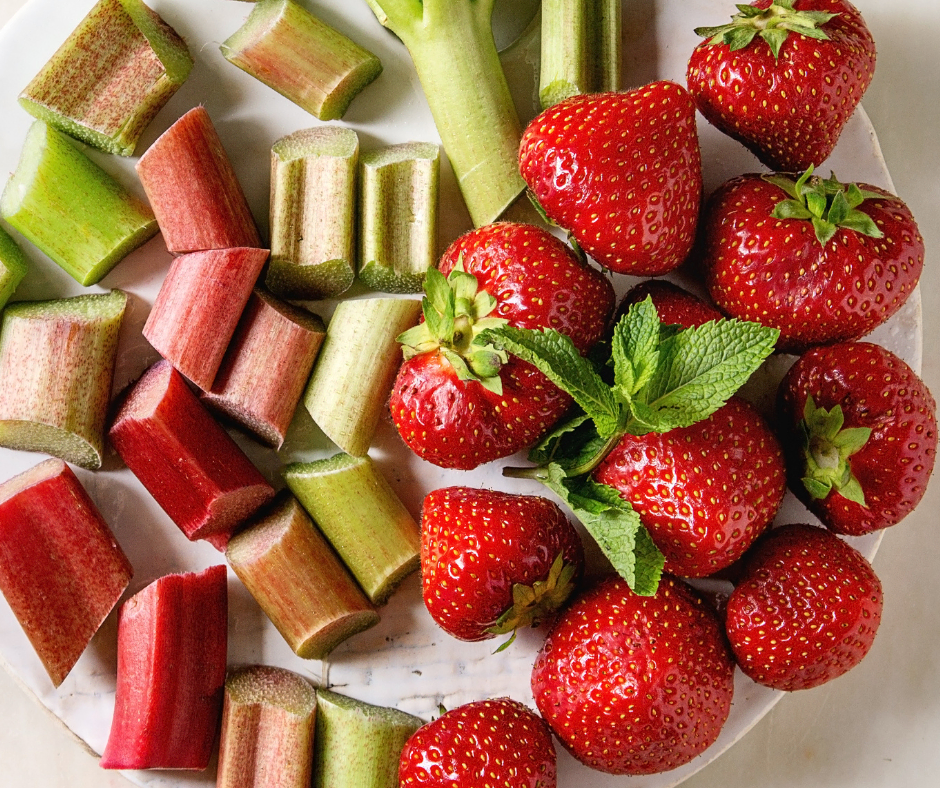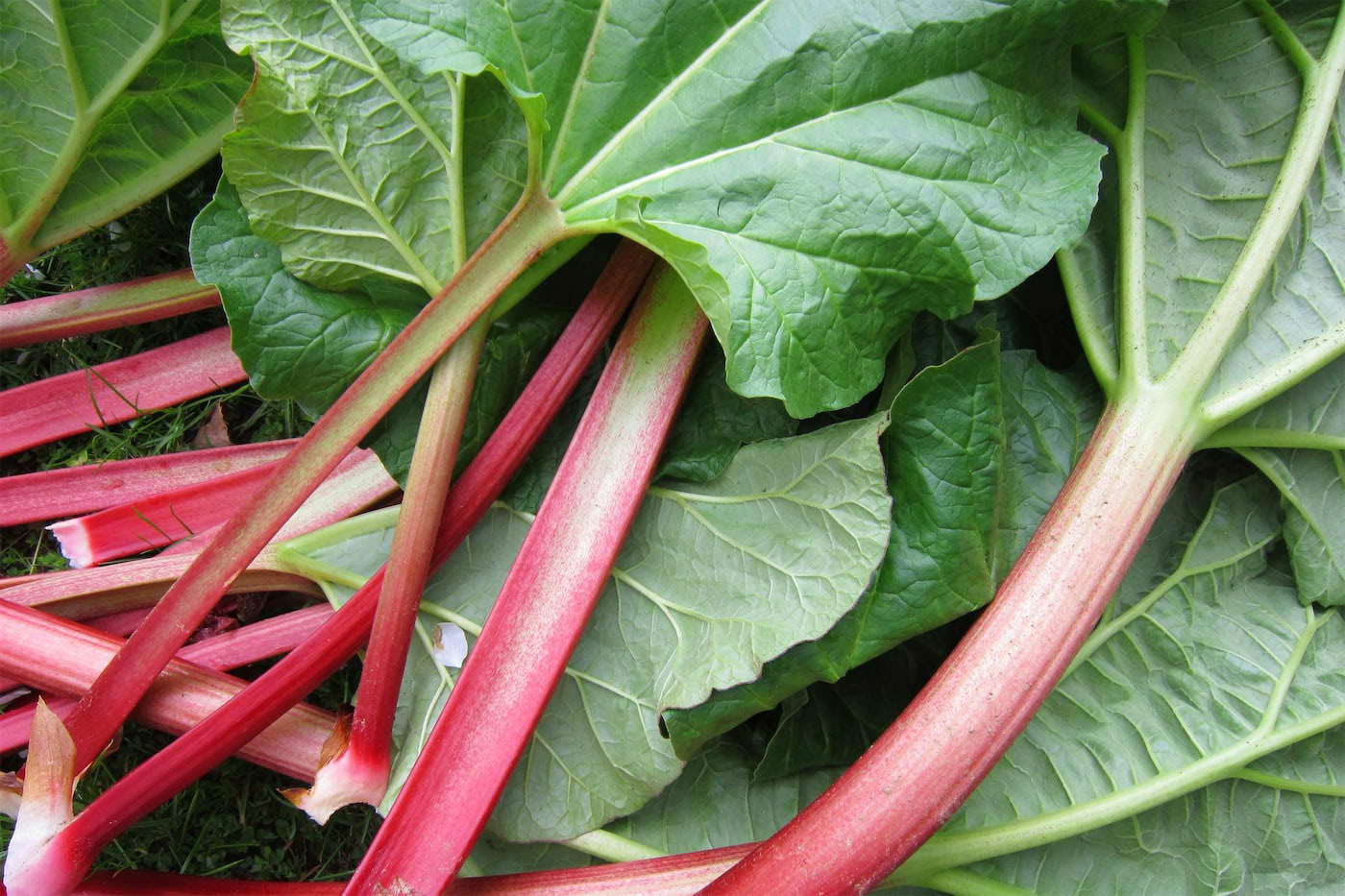
“Rhubarb is one of the oldest and easiest crops to cultivate and tastes delicious with our freshly picked strawberries!”
~ Farmer Dean
Rhubarb will always have a very nostalgic taste for me, as I remember as a boy picking fresh stalks for my mother to make one of my most favorite desserts – stewed rhubarb over ice cream! I still love it today and often put a spoon of chilled, stewed rhubarb on my ice cream at night. I have been growing rhubarb as a hobby at Swans Trail Farms since we moved next door in 2014. There are many varieties available, but I have chosen to cultivate ‘Victoria’ and ‘Ruby’ for their superb taste.
Rhubarb is one of the oldest and easiest crops to cultivate, and it's delicious when paired with freshly picked strawberries. If you're looking for a way to add some old-fashioned charm to your garden, rhubarb is definitely worth considering. Read on to learn more about planting and growing rhubarb in the Pacific Northwest—plus, we'll also talk about what to do with the poisonous leaves!

Planting and Care Tips for Rhubarb
Rhubarb grows best in full sun and well-drained soil. When planting rhubarb crowns, make sure that each crown has at least two buds above ground level. The crowns should be planted 12-18 inches apart in rows that are 24-30 inches apart. Rhubarb plants should be watered regularly during the growing season—about 1 inch of water per week is ideal. For best results, add a layer of mulch around your rhubarb plants to help retain moisture.
Spring: Remove rhubarb flowers as they appear. This will direct the plant’s energy into growing tasty stems instead of flowering and setting seed. Rhubarb plants will also appreciate a feed of general-purpose fertilizer in spring to give them a boost.
Summer: Water rhubarb plants during dry periods to prevent the soil from drying out. Rhubarb that is grown in containers will need to be watered much more often to keep the compost moist.
Autumn: When the leaves die back naturally, simply cut back the old rhubarb stalks to leave the buds exposed to cold winter weather. Apply a mulch of well-rotted manure around the crown of the plant. This will help to conserve moisture in the soil and keep the weeds down, as well as feeding the plants for the following growing season. Take care not to cover the crown as this may cause it to rot.
Winter: Every 5 or 6 years you will need to lift and divide rhubarb crowns to maintain their vigor and ensure that they remain productive. Use a spade to lift each crown before splitting it into 3 or 4 pieces and replanting them separately. Make sure that each piece has a healthy-looking bud which will become the growth point for next year’s new shoots.
 Harvesting Tips for Rhubarb
Harvesting Tips for Rhubarb
When harvesting rhubarb, be sure not to pull out the entire plant; instead, cut off the stalks close to the base. To avoid stressing the plants, wait until at least the second year after planting before harvesting any stalks. You can harvest from late spring until early summer; however, it's best not to harvest any stalks during extremely hot weather as this can damage or kill your plants. Additionally, keep in mind that only the stalks are edible—the leaves are poisonous and should not be consumed!

What To Do With Poisonous Leaves?
Fortunately, there's still a great use for those poisonous leaves: you can boil them down into a natural insecticide! Boiling rhubarb leaves creates an extract that's effective against leaf eating insects like aphids and caterpillars. After boiling your leaves, simply strain out any solids and then spray your extract directly onto affected plants or onto affected areas of your garden bed. This all-natural insecticide will help keep leaf eating pests away without damaging beneficial insects like pollinators or earthworms.

Rhubarb is a wonderful addition to any garden because it's easy to grow and tastes delicious when paired with strawberries picked fresh from Swans Trail Farms! When planting rhubarb in the Pacific Northwest, make sure you plant them far enough apart so they have room to grow; water them regularly throughout the growing season; and wait until the second year before harvesting any stalks. Finally, don't throw away those poisonous leaves—boil them down into a natural insecticide instead! With these tips in mind you’re sure to have success growing this ancient crop right in your backyard!
